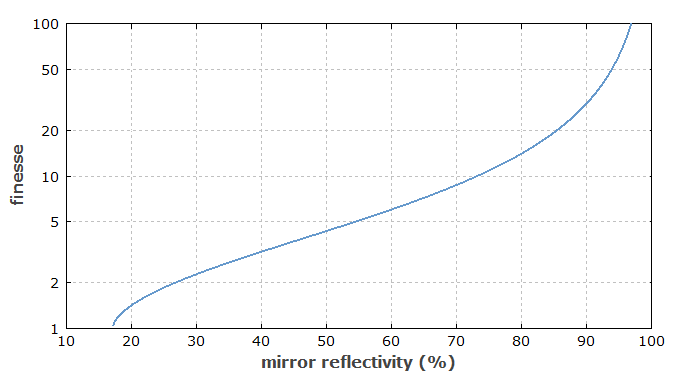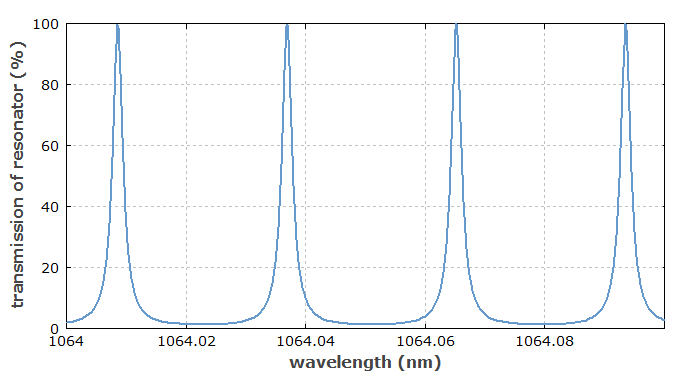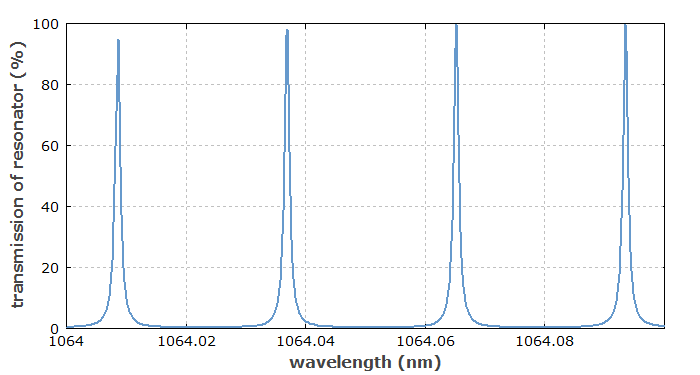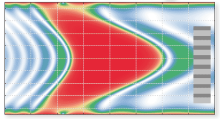Finesse
Definition: the free spectral range divided by the FWHM width of the resonances of an optical resonator
German: Finesse
Formula symbol: F
Units: (dimensionless)
How to cite the article; suggest additional literature
Author: Dr. Rüdiger Paschotta
The finesse of an optical resonator (cavity) is defined as its free spectral range divided by the (full width at half-maximum) bandwidth of its resonances. It is fully determined by the resonator losses and is independent of the resonator length. If a fraction ρ of the circulating power is left after one round-trip (i.e., a fraction 1 − ρ of the power is lost) when there is no incident field from outside the resonator, the finesse is

where the approximation holds for low round-trip losses (e.g., <10%), i.e., only for high finesse values.

The finesse is related to the Q factor: the latter is the finesse times the resonance frequency divided by the free spectral range.


Note that the apparent bandwidth of the resonances, observed e.g. by scanning the resonator length while observing the transmission with a single-frequency input wave, can appear to be increased due to the excitation of transverse modes with different orders. For a perfectly aligned confocal resonator, the frequencies of even higher-order modes are degenerate with frequencies of axial modes, so that this effect does not occur, but with some misalignment the modes are no longer perfectly degenerate. The apparent finesse can then be reduced.
A high finesse can be useful for optical spectrum analysis (→ spectrometers), because it allows the combination of a large free spectral range with a small resonator bandwidth. Therefore, a high spectral resolution in a wide spectral range is possible.
A very high finesse (above 106) can be achieved either by using dielectric supermirrors or in certain microcavities based on whispering gallery modes.
Questions and Comments from Users
Here you can submit questions and comments. As far as they get accepted by the author, they will appear above this paragraph together with the author’s answer. The author will decide on acceptance based on certain criteria. Essentially, the issue must be of sufficiently broad interest.
Please do not enter personal data here; we would otherwise delete it soon. (See also our privacy declaration.) If you wish to receive personal feedback or consultancy from the author, please contact him e.g. via e-mail.
By submitting the information, you give your consent to the potential publication of your inputs on our website according to our rules. (If you later retract your consent, we will delete those inputs.) As your inputs are first reviewed by the author, they may be published with some delay.
See also: cavities, Fabry–Pérot interferometers, supermirrors, reference cavities, bandwidth, Q factor, free spectral range
and other articles in the category optical resonators
 |





If you like this page, please share the link with your friends and colleagues, e.g. via social media:
These sharing buttons are implemented in a privacy-friendly way!